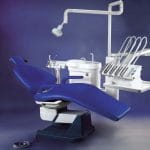Are you overwhelmed by the vast array of dental handpieces on the market? You’re not alone. Choosing the right dental handpiece is crucial for delivering top-notch patient care and maintaining your practice’s efficiency. With the global dental handpiece market expected to reach $2.7 billion by 2031, the options can seem endless.
But don’t worry – we’ve got you covered. This guide will walk you through everything you need to know to select the perfect handpiece for your needs. From high-speed air-driven models to cutting-edge electric options, we’ll break down the key features, benefits, and considerations. Ready to find your ideal dental companion? Let’s get started on your journey to handpiece mastery!
The Importance of Choosing the Right Dental Handpiece
A dental handpiece is more than just a tool; it’s an extension of your hands, allowing you to perform intricate tasks with finesse and accuracy. The right handpiece can streamline your workflow, enhance efficiency, and ultimately improve patient outcomes. Conversely, a poorly chosen handpiece can lead to frustration, discomfort, and even potential safety concerns.
Imagine trying to sculpt a masterpiece with a dull chisel or paint a portrait with a frayed brush. Just as an artist requires the right tools to bring their vision to life, a dental professional needs the perfect handpiece to deliver exceptional care. By understanding the nuances of dental handpieces and their various features, you can make an informed choice that aligns with your specific needs and preferences.
A Brief History of Dental Handpieces
Before delving into the intricacies of choosing the right handpiece, it’s essential to understand the evolution of this vital instrument. The earliest dental handpieces were crude and rudimentary, powered by foot pedals or hand-cranked mechanisms. It wasn’t until the late 19th century that the first air-driven handpieces emerged, revolutionizing the field of dentistry.
Over the years, advancements in technology and materials have led to the development of more sophisticated handpieces, offering improved ergonomics, increased precision, and enhanced patient comfort. Today, dental handpieces come in various types, each designed to cater to specific procedures and preferences.
Types of Dental Handpieces
To choose the right dental handpiece, it’s crucial to understand the different types available and their respective strengths and weaknesses.
Air-Driven Handpieces
Air-driven handpieces, also known as air turbines, are powered by compressed air and are renowned for their high speed and precision. These handpieces are commonly used for procedures that require rapid removal of tooth structure.
Advantages:
- High speed (up to 400,000 RPM)
- Lightweight and ergonomic
- Precise cutting
- Cost-effective
Disadvantages:
- Noisy operation
- Potential for overheating
- Limited torque
Electric Handpieces
Electric handpieces are powered by an electric motor. These handpieces offer consistent torque and power, making them ideal for procedures that require more force.
Advantages:
- Consistent torque and power
- Quieter operation
- Reduced vibration
- Improved patient comfort
Disadvantages:
- Higher initial cost
- Heavier weight
- Potential for overheating
Low-Speed Handpieces
Low-speed handpieces operate at lower speeds (typically 5,000 to 40,000 RPM) and are commonly used for procedures requiring precision control.
Advantages:
- Precise control
- Reduced risk of overheating
- Versatile attachments (straight, contra-angle)
Disadvantages:
- Limited cutting power
- Slower operation
Specialty Handpieces
Specialty handpieces are designed for specific procedures such as endodontics or implantology. These often feature unique designs tailored to their respective fields.
Key Factors to Consider When Choosing a Dental Handpiece
When selecting a dental handpiece, consider these vital factors:
Intended Use
Different procedures require varying levels of speed and torque. Identify what you perform most frequently—high-speed for cavity preparations or low-speed for polishing.
Ergonomics
Choose an ergonomically designed handpiece that reduces strain during long procedures. Look for lightweight designs with comfortable grips.
Noise Level
Air-driven handpieces tend to be noisier than electric ones. If noise reduction is important for you or your patients, consider electric options.
Lighting
Many modern handpieces come equipped with integrated lighting systems like LED lights that improve visibility during intricate procedures.
Maintenance and Sterilization
Select handpieces that are easy to disassemble and sterilize. Look for those with replaceable components to extend their lifespan.
Brand Reputation and Support
Invest in reputable brands known for quality and customer support. Reliable brands often offer warranties and readily available replacement parts.
Practical Tips for Choosing the Right Dental Handpiece
Now that you understand the different types of dental handpieces and key considerations, here are practical tips:
- Assess Your Practice Needs: Evaluate the types of procedures you perform most frequently.
- Try Before You Buy: Request demos or trial periods from manufacturers.
- Consider Your Budget: Determine your budget while prioritizing essential features.
- Seek Professional Advice: Consult experienced colleagues or manufacturer representatives.
- Prioritize Patient Comfort: Choose handpieces that minimize noise and vibration.
- Consider Future Needs: Invest in versatile systems that can adapt as your practice evolves.
Conclusion
Choosing the right dental handpiece is a critical decision impacting your practice’s efficiency and patient satisfaction. By understanding various types of handpieces along with essential factors in mind, you can navigate your options confidently.
The ultimate goal is to find a handpiece that integrates seamlessly into your workflow while enhancing precision and comfort for both you and your patients. With this guide’s insights at your disposal, you’re now prepared to make an informed decision aligned with your unique practice needs.
Embrace the power of the right dental handpiece—watch as it elevates your practice to new heights of excellence!
For more information on high-quality dental supplies including handpieces, visit Medidenta.















